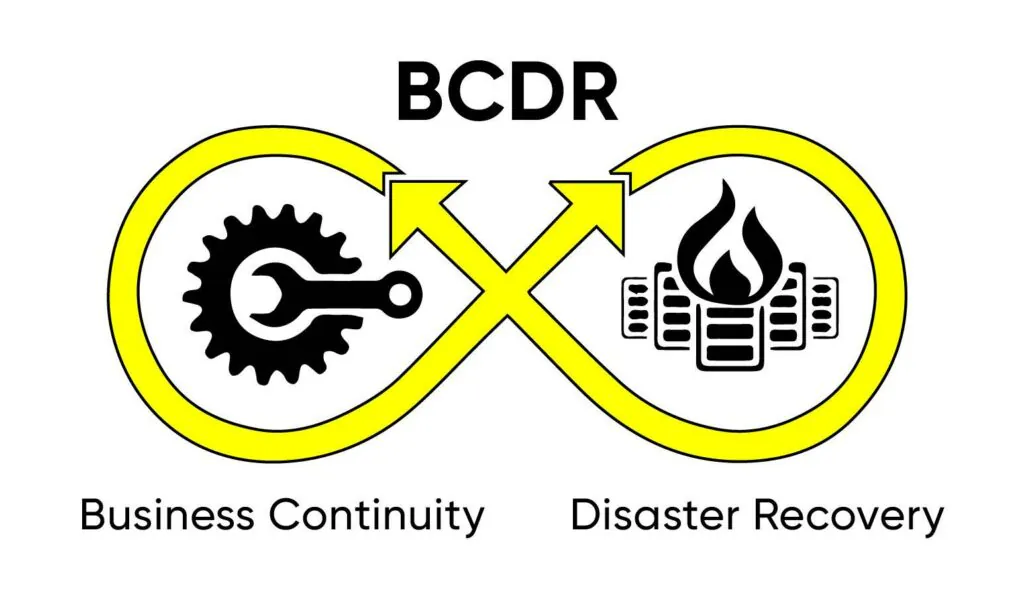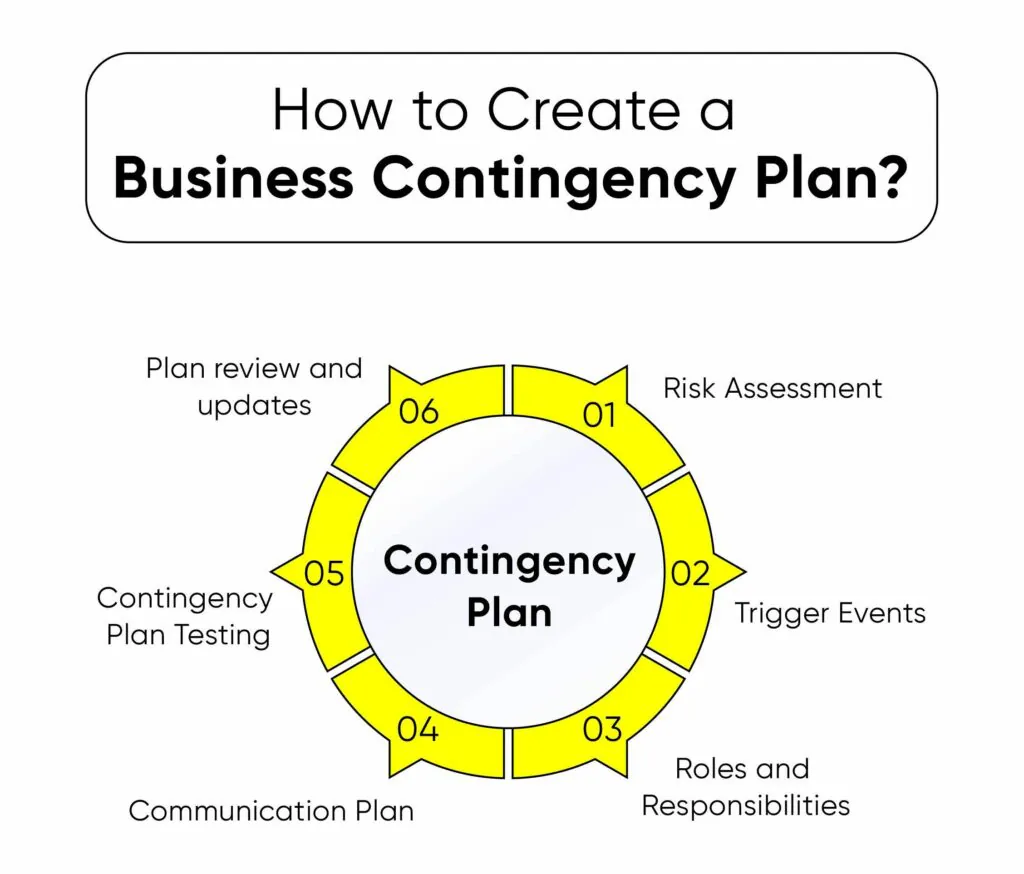Ever wondered if your business can survive a major disaster? If you’re unsure about your company’s ability to handle significant data loss or prolonged downtime, it’s high time you talked to experienced business continuity consultants.
Stratefix Consulting is here to guide you through the intricate world of Business Continuity Planning (BCP), ensuring your business is well-prepared for any unforeseen events.
Running a business requires vision, courage, dedication, and more than a little luck. As the COVID-19 pandemic has shown, even the most robust business plans can be vulnerable to unforeseen crises.
Statistics from the U.S. Small Business Administration show that 40 to 60 percent of small businesses never reopen after a significant disaster.
In 2020-21, 12,930 companies in India shut down operations due to the pandemic, highlighting the unpredictability of the world and how quickly things can go wrong. However, while predicting the future is impossible, preparing for potential disruptions with a well-structured contingency plan is essential for the longevity of any business.
This article delves into the importance of business continuity and disaster recovery (BCDR) solutions, and why SMEs need a contingency plan, combining insights from recent events and practical steps to safeguard business operations.
Understanding Business Continuity and Disaster Recovery (BCDR)

What is Business Continuity?
Business Continuity refers to the proactive planning and preparation to ensure that a company can maintain essential functions during and after a disaster. It involves creating systems of prevention and recovery to handle potential threats, ensuring smooth operations.
What is Disaster Recovery?
Disaster Recovery is a subset of Business Continuity that focuses specifically on restoring IT and technology systems after a crisis. It aims to restore data access and IT infrastructure to maintain business operations.
What Goes into a Business Continuity Plan (BCP)?
A robust BCP outlines your company’s readiness for various disaster scenarios. Consultants can help you develop this comprehensive documented process, ensuring all potential risks are addressed.
What is the Business Continuity Management (BCM) Lifecycle?
The BCM Lifecycle includes:
- Identify: Conducting a risk assessment.
- Analyze: Performing a business impact analysis.
- Create: Developing strategies and plans.
- Measure: Testing, training, and maintaining the plan.
This process ensures all risks are identified and response mechanisms are in place, enabling a coordinated response during a disaster or outage.
Why Use Business Continuity Consultants?
Every business faces potential disasters, whether from technology failures, natural calamities, cyber-attacks, or even simple human errors. How you plan for these disruptions will determine your company’s vulnerability and recovery speed. Unfortunately, business continuity is complex, with many factors influencing your ability to withstand and recover from critical events. This is where business continuity consultants come in.
Differences and Similarities
While both Business Continuity and Disaster Recovery (BCDR) aim to mitigate risks and ensure smooth operations during crises, Business Continuity covers the broader scope of keeping all essential business functions operational. In contrast, Disaster Recovery focuses on restoring IT and data capabilities.
Key Components of Effective BCDR for your business
1. Risk Assessment and Business Impact Analysis
A comprehensive risk assessment identifies potential threats to the business, while a business impact analysis evaluates the consequences of these risks. Together, they help prioritize which business functions are most critical to restore.
2. Strategy Development and Implementation
Developing a robust BCDR strategy involves outlining detailed plans for responding to different types of disasters. Implementation includes training staff, establishing communication protocols, and setting up recovery sites.
3. Data Backup and Recovery Solutions
Regular data backups and reliable recovery solutions are crucial. These ensure that data can be restored quickly and accurately, minimizing downtime and data loss.
4. Crisis Management and Communication
Effective crisis management involves having a clear communication plan to keep stakeholders informed during and after a disaster. This includes designating roles and responsibilities for crisis response teams.

1. Preparing for the Unexpected
A contingency plan prepares businesses for unforeseen events, whether natural disasters, cyber-attacks, or market downturns. By having a plan in place, businesses can respond more effectively and minimize the impact of unexpected disruptions.
2. Mitigating Business Losses
An effective contingency plan helps mitigate financial losses by ensuring critical operations can continue or quickly resume after a disruption. This is vital for maintaining cash flow and avoiding long-term damage to the business.
3. Faster Response to Contingencies
With a contingency plan, businesses can respond more quickly to emergencies. This speed is crucial for minimizing downtime and maintaining customer trust and satisfaction.
4. Managing Public Relations
A well-managed response to a crisis can enhance a business’s reputation. A contingency plan includes communication strategies to manage public relations, keeping stakeholders informed and maintaining the company’s image.
5. Better Business Agility
A contingency plan enhances business agility, allowing the company to adapt quickly to changing circumstances. This flexibility is crucial for surviving and thriving in a dynamic business environment.
How to Create a Business Contingency Plan?
- Prioritize Your Most Important Resources – Identify and prioritize the resources essential to your business operations. These include key personnel, data, equipment, and facilities.
- Identify Major Risks – Conduct a thorough risk assessment to identify potential threats to your business. Consider natural disasters, cyber-attacks, supply chain disruptions, and other relevant risks.
- Draft a Contingency Plan – Develop a detailed contingency plan outlining how to respond to various types of disruptions. Include procedures for maintaining critical operations, communication plans, and recovery strategies.
- Distribute the Plan to Every Member – Ensure that all employees understand their roles in the contingency plan. Provide training and conduct regular drills to ensure everyone is prepared to act quickly and effectively.
- Keep Updating the Plan – A contingency plan is not a one-time effort. Regularly review and update the plan to reflect new risks, changes in business operations, and lessons learned from past incidents.
- Invest Towards a Contingency Fund – Set aside financial resources to cover expenses during a crisis. This fund can help ensure that the business has the means to recover quickly without severe financial strain.
A consultant can provide peace of mind by identifying additional solutions and steps you might not have considered, such as:
- Training Programs
- Secondary Business Locations
- Medical Response Planning
- Legal and Regulatory Compliance
- Emergency Contact Lists
Market Trends in Business Continuity and Disaster Recovery Solutions
- Increasing Adoption of Cloud-based Solutions – More businesses are adopting cloud-based BCDR services for their flexibility and scalability. These solutions offer robust disaster recovery capabilities and can be accessed from anywhere. (Learn: How MSMEs Can Thrive in a Tech-Savvy India)
- Integration of AI and Machine Learning – AI and machine learning technologies are being integrated into BCDR solutions to predict potential threats, automate responses, and improve overall efficiency. (Learn: Why MSMEs should adapt the AI-Powered India?)
- Rising Demand for Managed BCDR Services – As BCDR becomes more complex, many businesses are turning to managed service providers to handle their continuity and recovery needs, ensuring expert management and rapid response.
- Growing Importance of Cybersecurity – With the increasing prevalence of cyber-attacks, integrating robust cybersecurity measures into BCDR plans is essential for protecting data and ensuring business continuity.
Challenges in the BCDR Market
- Complexity of Multi-cloud Environments – Managing BCDR in multi-cloud environments can be challenging due to the diverse and interconnected systems involved.
- Evolving Cyber Threat Landscape – Keeping up with the evolving cyber threat landscape requires continuous updates and advancements in BCDR solutions.
- Ensuring Compliance with Global Regulations – Navigating the complex web of global regulations and ensuring compliance can be a significant challenge for businesses.
- Finding the Right Consultant – Choose a consultant who gels well with your team and whose expertise aligns with your specific needs. You’ll be working closely with them through the entire Business Continuity Management Planning (BCMP) lifecycle, so a good personal and professional fit is crucial.
Reviewing and Auditing Your BCP: A Multi-Tool Approach
There’s no one-size-fits-all approach to BCP reviews and audits. The best method depends on your industry and the specific risks you face. Here’s a toolbox filled with techniques to keep your BCP sharp:
- Internal Audits: Conduct regular self-assessments using checklists and questionnaires. This allows you to identify gaps and areas for improvement internally.
- Management Reviews: Schedule periodic reviews with key stakeholders to discuss the BCP’s effectiveness and make necessary adjustments based on real-world experiences or industry best practices.
- Tabletop Exercises: Simulate real-world scenarios to test your BCP’s functionality. These exercises help identify weaknesses in communication, response protocols, and resource allocation.
- After-Action Reviews: Following any incident, conduct a thorough review to analyze what went well, what went wrong, and how your BCP can be strengthened for future disruptions.
The Future Outlook of BCMP and BCDR solutions
Expansion in Emerging Markets – As emerging markets continue to grow and digitize, the demand for BCDR solutions is expected to increase, offering new opportunities for market expansion.
Innovations in BCDR Technologies – Ongoing innovations in BCDR technologies, including AI and machine learning, will continue to enhance the effectiveness and efficiency of these solutions.
Industry-Specific Considerations:
- Textile, Apparel & FMCG: Focus on supply chain disruptions, quality control issues, and potential product recalls.
- Chemical & Pharma: Prioritize safety protocols, hazardous material management, and environmental compliance during disruptions.
- Luxury Diamond & Jewellery: Tighten security measures, data backup procedures, and disaster recovery plans for high-value inventory.
- Manufacturing & Automobile: Review production line redundancy, supplier diversification strategies, and just-in-time inventory management practices.
- Engineering & Construction: Plan for project delays due to material shortages, equipment failure, or workforce disruptions.
Aligning BCP Reviews with Broader Business Goals:
To ensure your BCP review isn’t just a box-ticking exercise, ask yourself these questions to connect it to your overarching business strategy:
- How will a BCP disruption impact our revenue targets?
- Does our BCP support our expansion plans into new markets?
- Are our BCP recovery timelines aligned with our customer service commitments?
- How can we leverage BCP reviews to identify opportunities for process improvement and cost savings?
- Does the BCP support our business continuity goals, such as maintaining customer satisfaction, protecting brand reputation, and minimizing financial losses?
Remember: A well-reviewed BCP is a proactive investment in your business’s future. By regularly testing and refining your plan, you’ll be better equipped to weather any storm and emerge stronger.
- Schedule BCP reviews at least annually, or more frequently if your industry is highly susceptible to disruptions.
- Involve a diverse team from different departments in the review process to gain a holistic perspective.
- Document your BCP review findings and action items for future reference.
- Integrate BCP reviews into your overall risk management framework.
Final Thoughts:
By following these steps, you can ensure your BCP remains a powerful tool for navigating disruptions and achieving your business goals.
Ready to safeguard your business with a comprehensive BCP?
Stratefix Consulting’s team of experts is here to help. With a proven track record across 75+ industries, we provide personalized solutions to ensure your business’s long-term resilience.
Remember, a BCP that gathers dust on a shelf is no good to anyone. Make regular reviews and audits a part of your business continuity culture!
In today’s unpredictable business environment, having a robust Business Continuity and Disaster Recovery plan, coupled with a comprehensive contingency plan, is not just a best practice but a necessity.
SMEs, in particular, must prioritize these strategies to safeguard their operations, protect their data, and ensure their long-term viability.
By preparing for the unexpected, mitigating losses, responding quickly to crises, managing public relations effectively, and enhancing business agility, organizations can navigate disruptions more successfully and emerge stronger.
Invest in BCDR solutions and develop a robust contingency plan today to secure your business’s future.
Contact us today to get started on your Business Continuity Plan.






